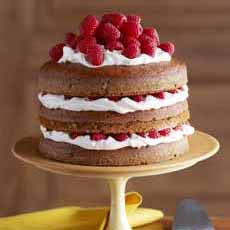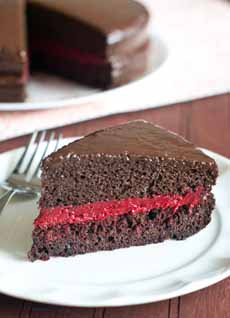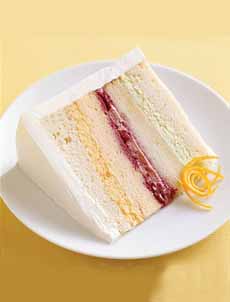TIP OF THE DAY: Special Cake Fillings
|
|
If you bake layer cakes, even only now and then, from box or from scratch, here’s an easy tip to make yours more special:
Add something fun and tasty to the filling between layers. FOR MORE CAKE FUN, CHECK OUT ARE CAKE GLOSSARY TYPES OF CAKE FILLINGS Common cake fillings include: Additionally, each filling can be made more complex complex with the addition of: You don’t have to be a kid to appreciate a bit of candy in your cake. Filling goes between the layers of a cake. Each layer can have a different filling; for example, one layer of ganache and one layer of custard. The frosting of a cake can be used as the filling as well. Frosting is used to cover the top and sides of a cake, and often as a filling between the layers. It is typically made from sugar plus a fat such as butter and/or milk or cream. Frosting is generally flavored with vanilla extract or other flavoring—cocoa powder, coffee, lemon, lime, orange, strawberry, etc. A vanilla frosting can be colored with food coloring, which adds gaiety without additional flavor. Icing is technically different from frosting. Icing is made with confectioner’s sugar, also called icing sugar. Most consumers aren’t aware of this technicality, and use the words interchangeably. Liquors are distilled spirits; that’s why they’re also known as spirits. They are made of grains or other plants that are fermented and distilled into high-proof alcoholic beverages. Bourbon, gin, rum, scotch, tequila and vodka are examples. The distillation process separates the water from the alcohol, increasing the alcohol content to at least 20%/40 proof. Japanese shochu is an example of this. Western spirits are typically distilled to 40% alcohol/80 proof, although some rums are distilled to a higher proof. Liqueurs are sweetened spirits. with with various extracts, oils and other flavors added. Brandy, rum and whiskey are common base spirits for liqueurs. |
|
|
Liqueur flavors vary widely—from chocolate and coffee to fruit, herb and nut flavors. The alcohol content of liqueurs ranges from a low of 15%/30 proof to 55%/110 proof. Here’s the difference between cordial, eau de vie, liqueur and schnapps. |
||



